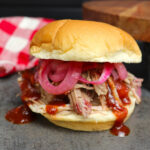Smoked Pulled Pork
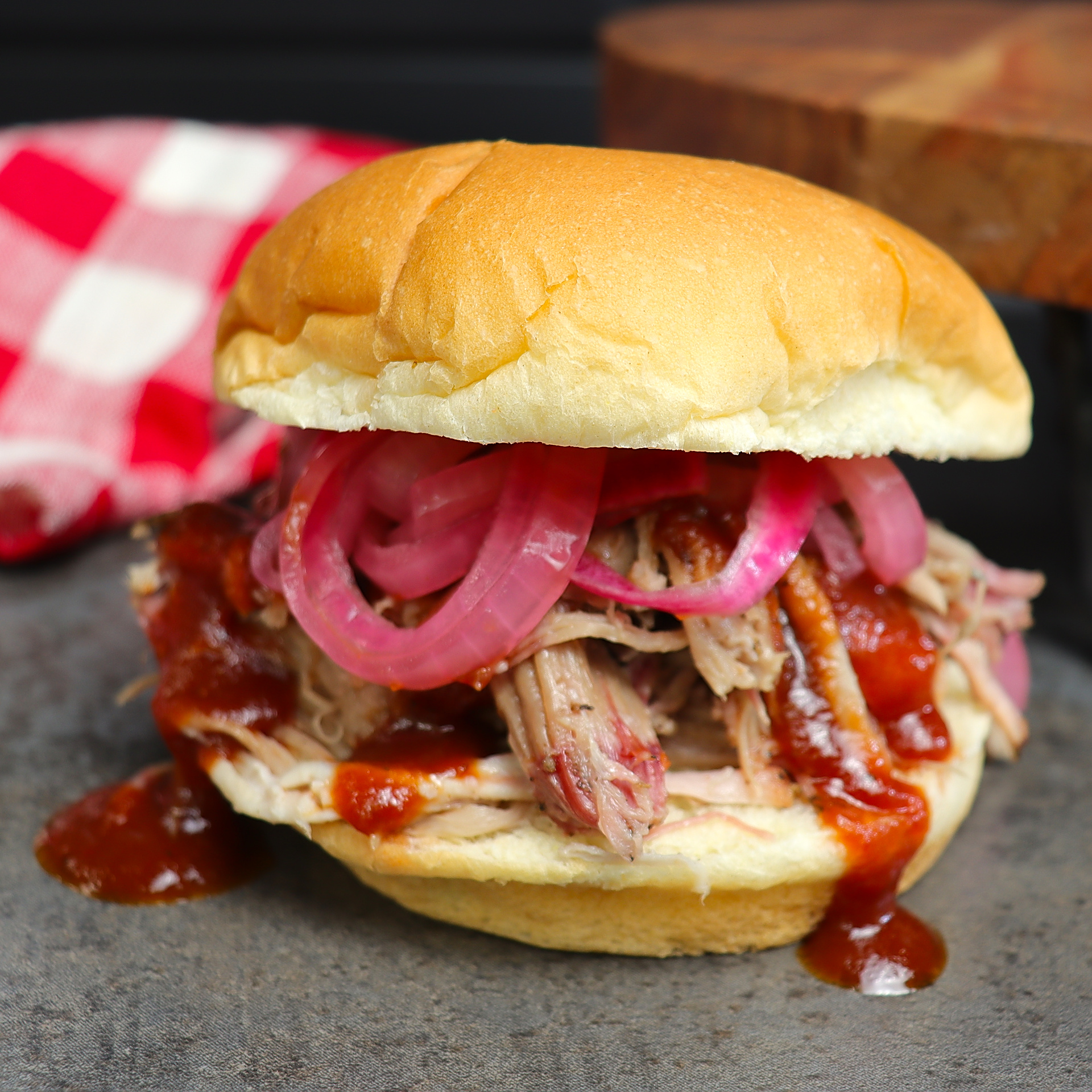
Smoked Pulled Pork earns its mouthwatering name from a process that involves slow smoking pork to the point of irresistible tenderness, allowing it to be effortlessly “pulled” into succulent, flavorful strands.
Mastering the art of smoking meat can take time, experimentation, and lots of practice. Quoting from Aaron Franklin’s, of the famous Franklin Barbecue restaurant in Austin Texas, “You only learn how to make good BBQ by making bad BBQ”.
This makes Smoked Pulled Pork the perfect choice for both beginner and experienced pitmasters looking to hone their craft. It’s a forgiving cut of meat with plenty of interconnected fat and a thick fat cap. This helps to keep it from drying out during the cooking and process and to achieve that pull-apart tenderness.
Choosing the Right Cut of Meat
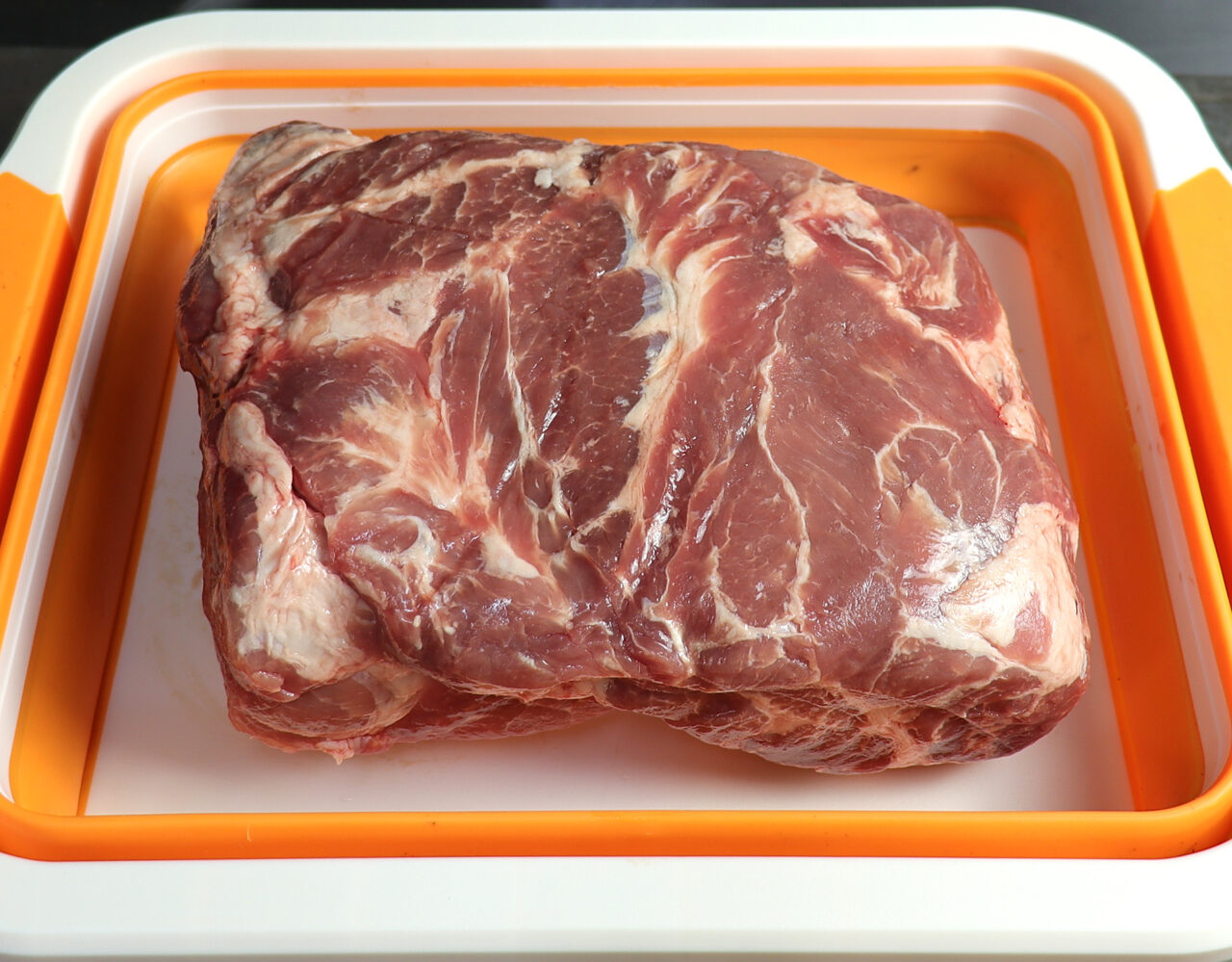
The first time I attempted Smoked Pulled Pork I was told to just go buy a Boston Butt. So I headed over to the nearest grocery store in my home state of Minnesota (not exactly the BBQ capital of the world). I walked straight to the pork section of the meat aisle ready to pick out the best Boston Butt they had.
Well confusion immediately set in as there was not a single Boston Butt to be found. They only had pork shoulder (wrong end of the animal, so I thought) and a variety of pork chops.
“OK, they must be out!” So, I headed over to a little higher end grocery store; they surely will have what I need even if I have to pay a few bucks more.
Again nothing! They had some fantastic looking pork tenderloins but I knew that is not what I was looking for. So I figured I would do what no man wants to do, admit defeat and ask for help.
I patiently waited my turn at the meat counter hoping maybe they had some Boston Butts in back. “Do you happen to have a Boston Butt”. I asked. “You mean a pork butt?” he replied. I can imagine my face was not saying yes but I replied “Yes” anyway. It turns out a Boston Butt and a Pork Butt are the same thing and it actually comes from the shoulder of the animal and not the butt. Check out this article I found on Serious Eats for a great explanation of the differences between a Pork shoulder, a Picnic Shoulder, and a Pork Butt (a.k.a. Boston Butt)
How to Season the Meat
For this recipe, I coat the entire pork butt with yellow mustard. This acts as a binder that helps the seasoning stick to the meat. Don’t worry you can’t taste the mustard on the finished product. If you really don’t like mustard you can use olive oil, hot sauce, or just skip the binder altogether. The seasoning, smoke flavor, and slow cooking process eliminate any flavor from the binder.
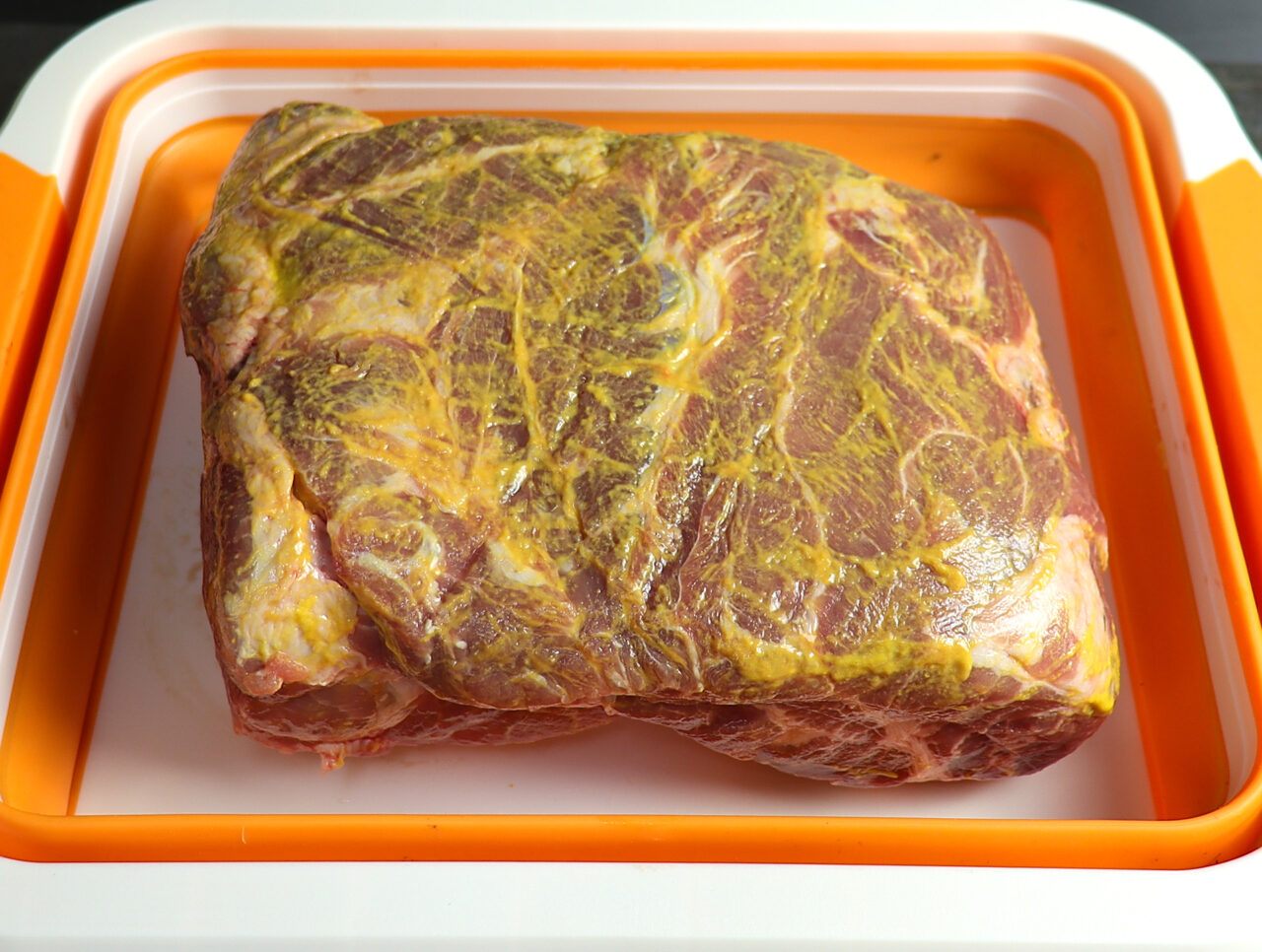
A pork butt is a large piece of meat and it can handle a lot of seasoning. Don’t be shy and apply a generous amount of seasoning.
For this recipe, I used my homemade BBQ Rub. There are a ton of great BBQ rubs on the market these days with all kinds of flavor profiles. Feel free to use your favorite!
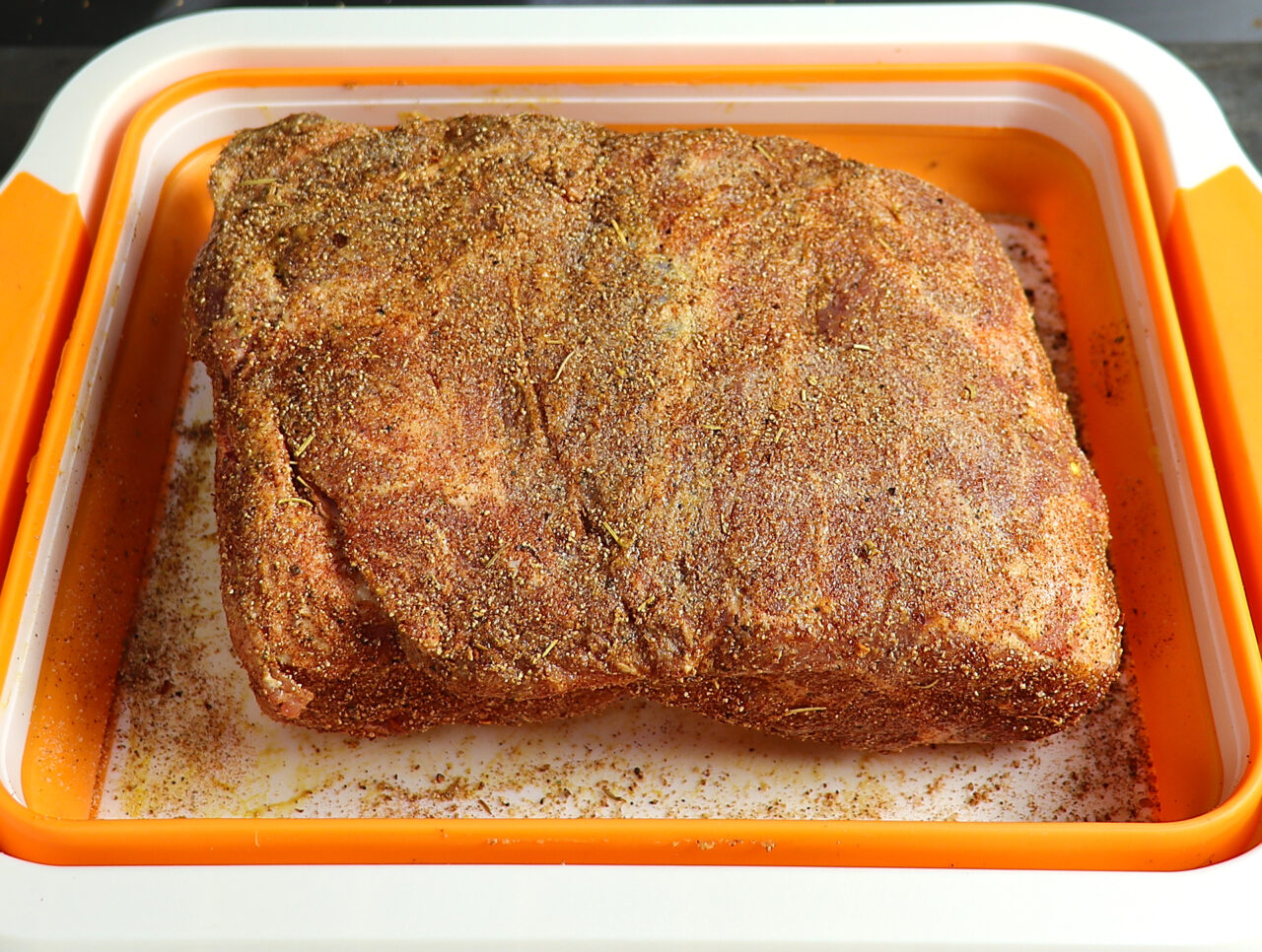
Time to Fire up the Smoker
I typically use oak as my main fuel source in my offset smoker and add a few pieces of apple or pecan early on in the cook. I find these woods create a light smoky flavor that works well with the pork.
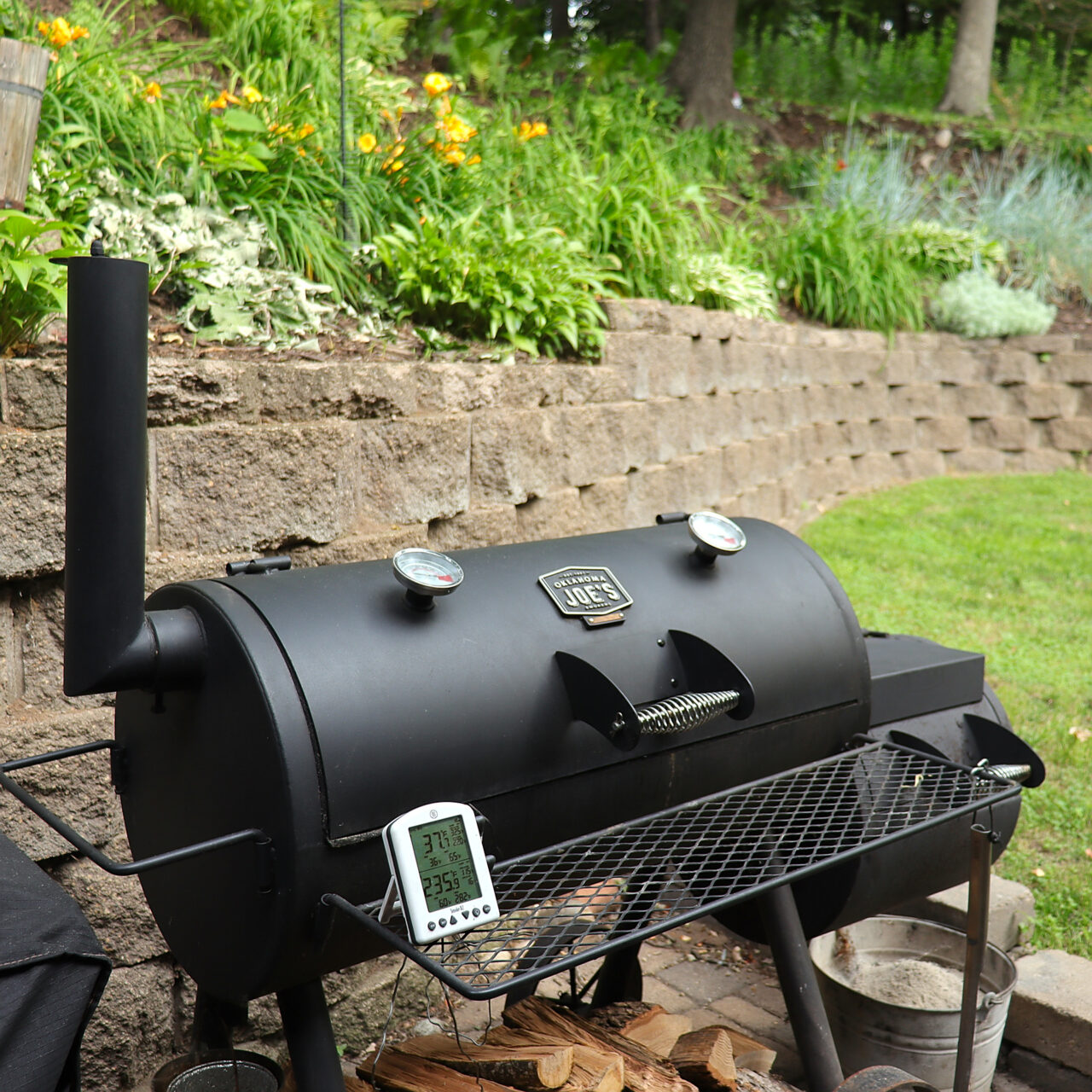
Run the smoker between 225-250°F. The great thing about smoking pork butt is that it is pretty forgiving. Don’t worry if your pit temperature spikes above or falls below these temperatures for a bit. Just adjust and let it settle back to your target temperature.
Smoking the Pork Butt
Once I have the smoker up to temperature it’s time to add the pork butt. I like to place it with the fat cap side facing down.
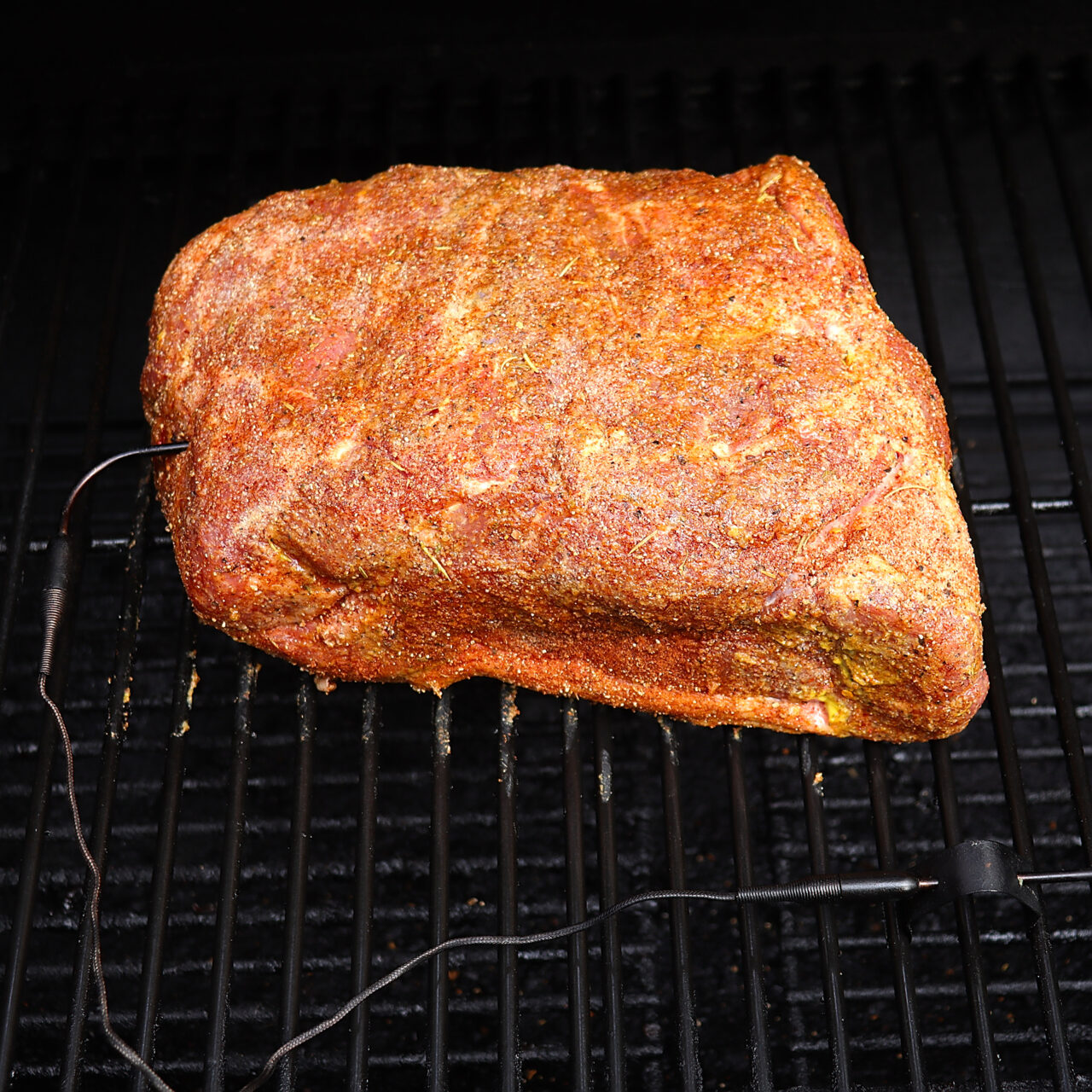
Smoking an 8-pound pork butt takes time, typically around 1.5 to 2 hours per pound. Slow and low is the mantra here. Patience is not just a virtue; it’s the secret ingredient that transforms a pork butt into a tender masterpiece.
Utilize a reliable thermometer to monitor both the ambient temperature of the smoker and the internal temperature of the meat.
As the smoker works its magic, the combination of the dry rub and the slow exposure to the smoke creates a caramelized crust that seals in the juices and enhances the overall flavor profile. When done right, the bark delivers a savory flavor explosion in every bite.
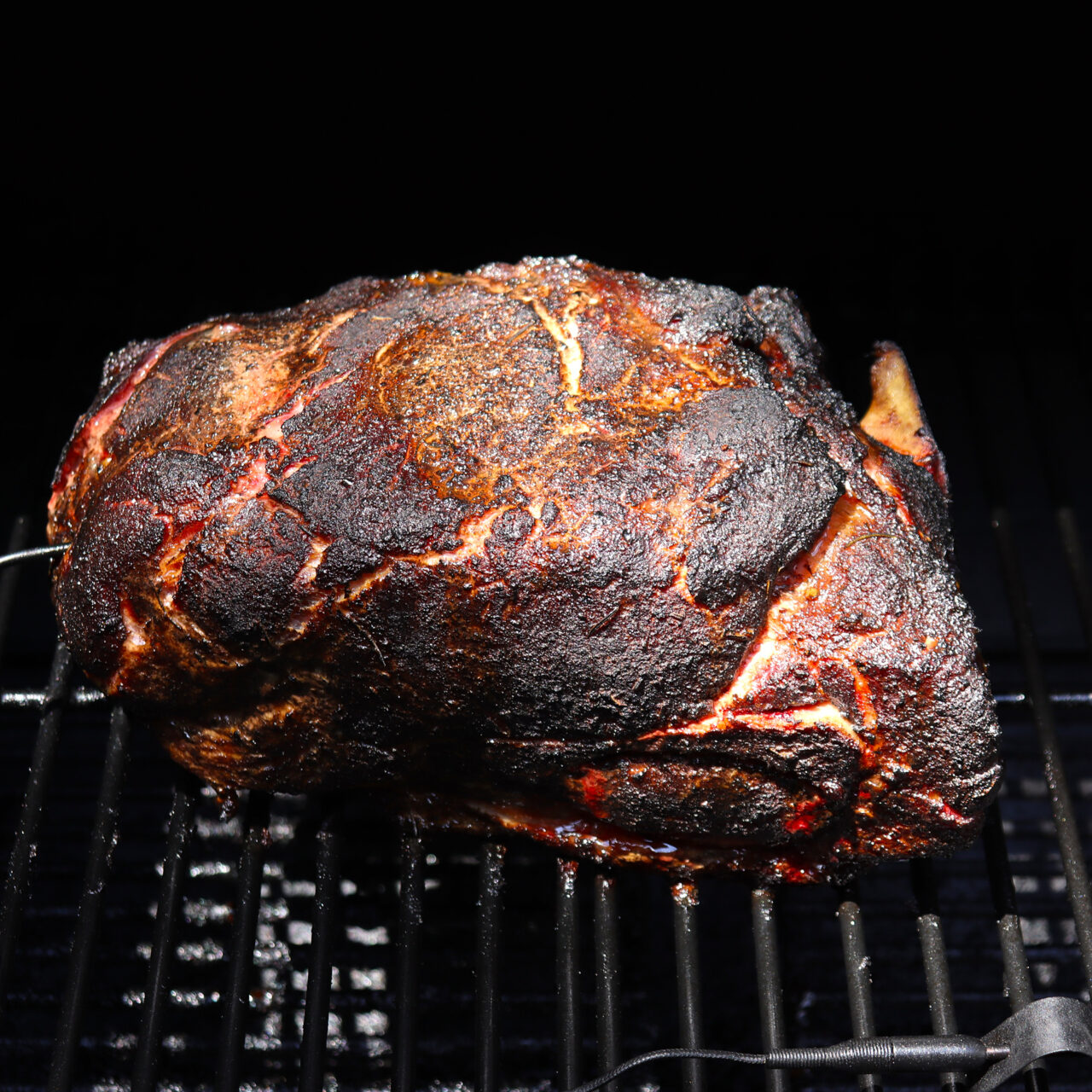
Resting and Shredding
Once the pork butt reaches the desired temperature, resist the temptation to dive in immediately. Let it rest for at least 30 minutes to allow the meat to relax and the juices too redistribute. After the resting period, you should be able to easily pull out the shoulder bone. This is a sign you have nailed that perfect tenderness.
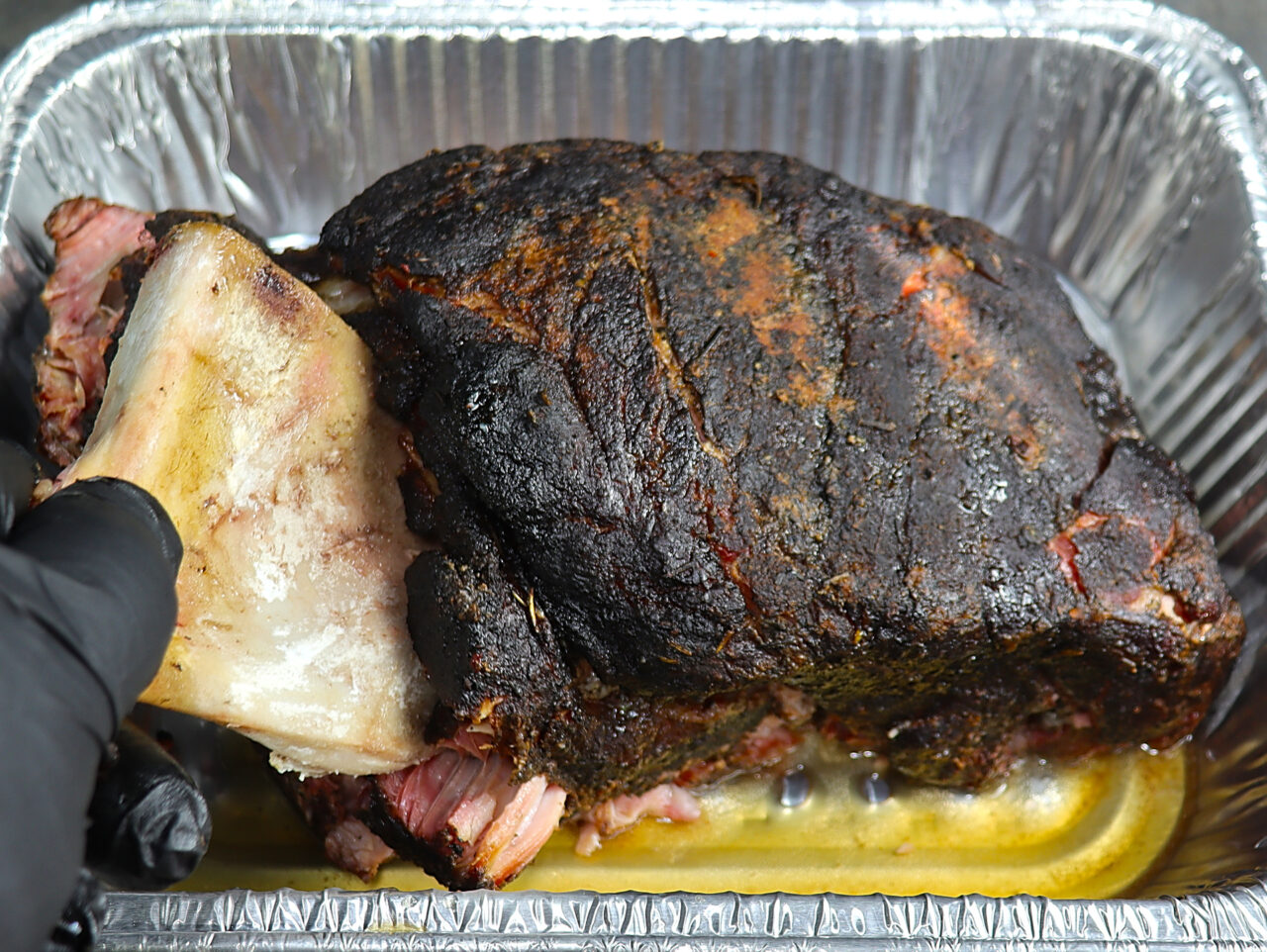
Using two forks or meat claws, effortlessly shred the pork into succulent strands.
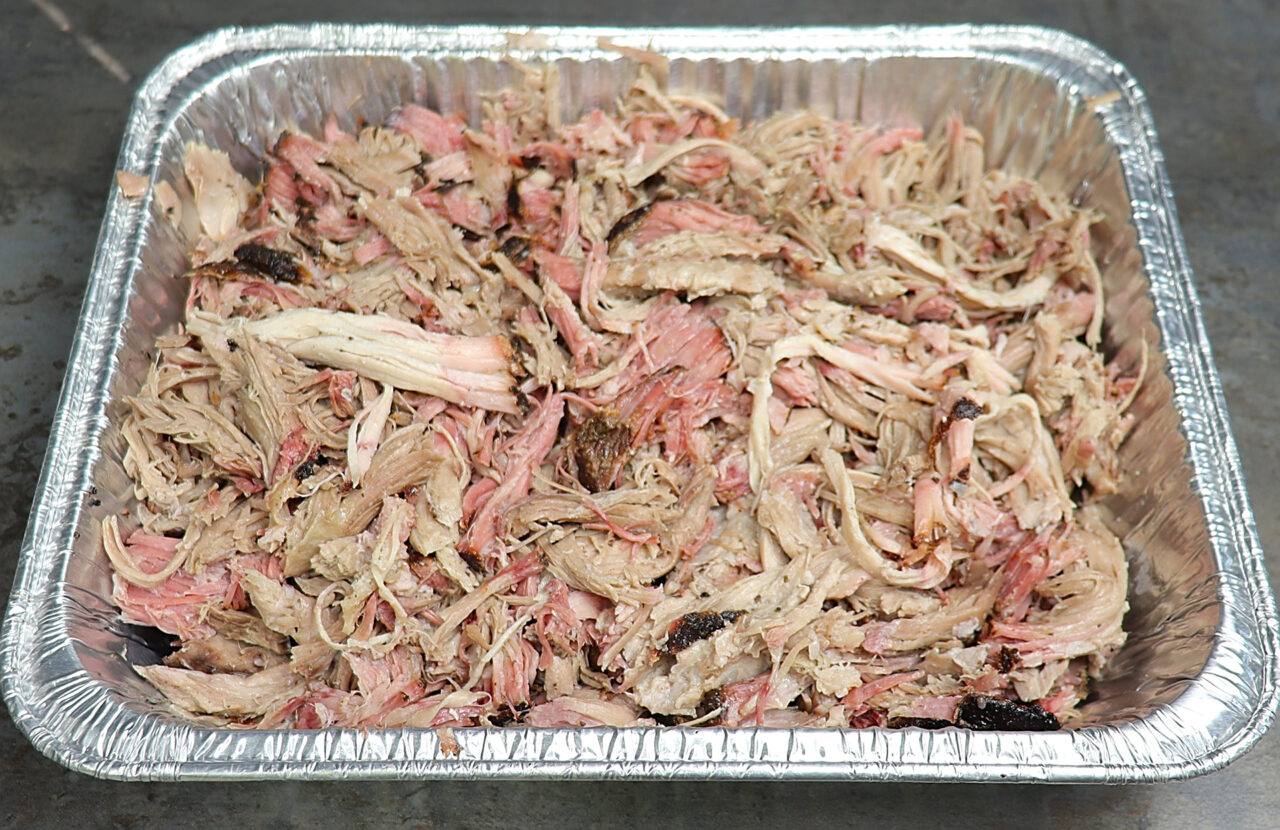
With your perfectly smoked pulled pork ready, it’s time to assemble sandwiches, tacos, or whatever creative dish you have in mind. Whether enjoyed on its own or with your favorite barbecue sauce, coleslaw, or pickles, your efforts in smoking the pork butt will undoubtedly be rewarded with a symphony of savory, smoky goodness and a memorable dining experience.
Smoked Pulled Pork
Ingredients
- 1 Whole Pork Shoulder/Butt (8lbs)
- 2 tbsp Yellow Mustard optional
- Northland Cookery’s BBQ Dry Rub recipe below
Northland Cookery’s BBQ Dry Rub
- ¼ cup Brown Sugar
- 2 tbsp Course Ground Black Pepper
- 2 tbsp Kosher Salt
- 2 tbsp Sweet Paprika
- 1 tbsp Granulated Garlic
- 1 tbsp Granulated Onion
- 1 tsp Chili Powder
- 1 tsp Cayenne Pepper
Instructions
Prepare the Pork Shoulder
- Rinse the pork shoulder under cold water and pat it dry with paper towels.
- Trim any excess fat if desired, leaving a thin layer for flavor and moisture.
- Apply a thin layer of yellow mustard to the entire surface of the pork shoulder. This will act as a binder for the dry rub.
Apply the Dry Rub
- In a bowl, combine the ingredients for Northland Cookery’s BBQ Dry Rub
- Generously apply the dry rub to the mustard-coated pork shoulder making sure to cover all sides.
Let it Rest
- Once the pork shoulder is well-coated, let it sit at room temperature for about 30 minutes. This allows the rub to penetrate into the meat.
Preheat the Smoker
- Preheat your smoker to 225°F (107°C).
Smoke the Pork
- Place the pork shoulder on the smoker grates, fat side up.
- Maintain a consistent temperature of 225°F (107°C) throughout the smoking process.
- Smoke the pork until it reaches an internal temperature of 195-205°F (90-96°C). This can take anywhere from 1.5 to 2 hours per pound.
Rest and Pull
- Once the pork reaches the desired temperature, remove it from the smoker, place it in a foil pan, and cover. Let it rest for at least 30 minutes. This allows the juices to redistribute throughout the meat.
- Using two forks or meat claws, shred the pork, discard and large pieces of fat.
Serve
- Serve the pulled pork on buns with your favorite barbecue sauce, pickled red onions, coleslaw, or pickles.

